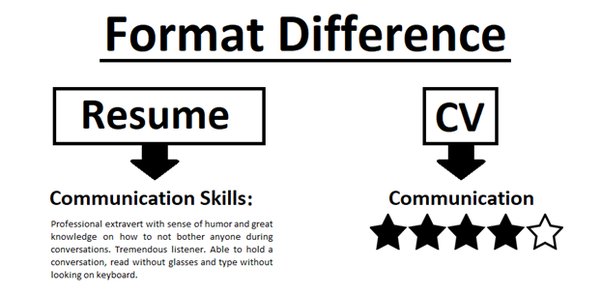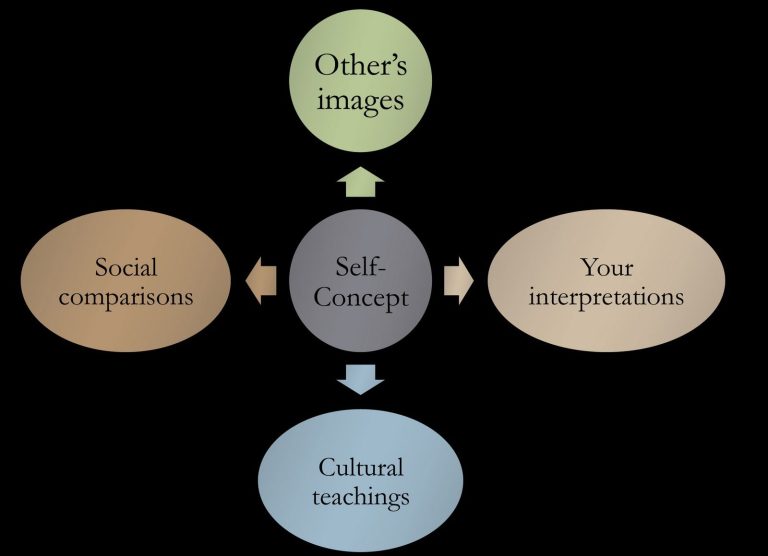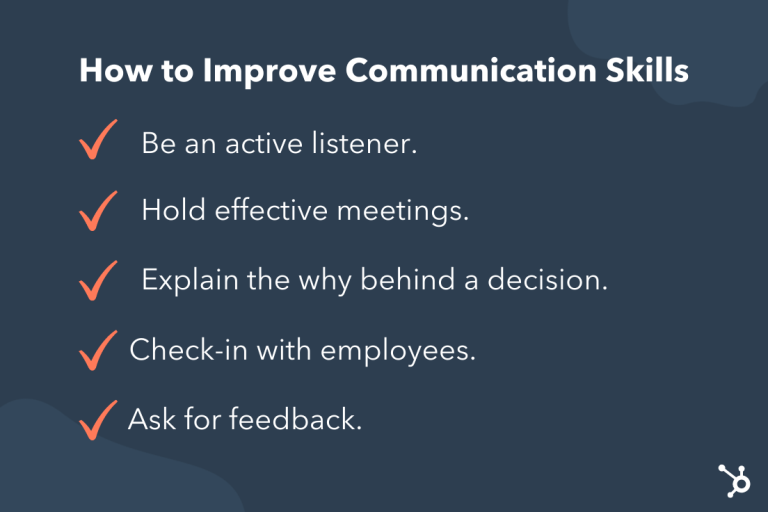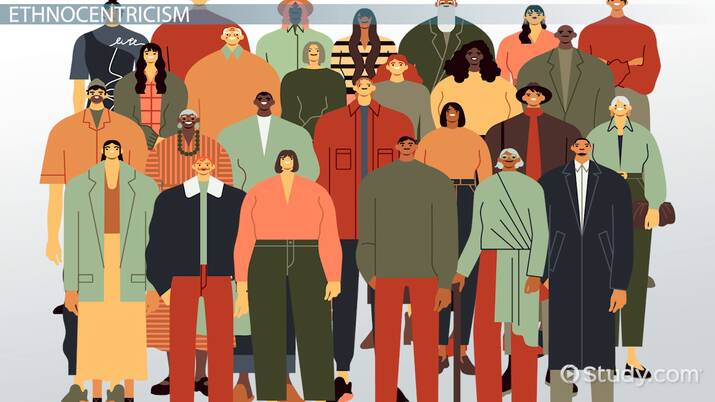What are the Levels of Communication?
The levels of communication are intrapersonal, interpersonal, group, and mass communication. Communication can take place within an individual (intrapersonal), between two individuals (interpersonal), among a small group (group communication), or to a large audience (mass communication).
Each level has its own unique characteristics and dynamics. Effective communication is essential in personal and professional interactions. Understanding the different levels of communication can help individuals and organizations communicate more effectively with others. Intrapersonal communication involves self-reflection and inner dialogue, while interpersonal communication focuses on building relationships and effective interaction between two people.
Group communication involves communication within a small group, such as a team or committee, and considers factors like leadership and decision-making. Lastly, mass communication involves conveying messages to a large, varied audience through channels like television, radio, or social media. By understanding and mastering these different levels of communication, individuals and organizations can enhance their communication skills and achieve their goals effectively.

Credit: www.productiveflourishing.com
What Is Communication?
Communication is the process of exchanging information, ideas, and emotions between individuals or groups. There are different levels of communication, including verbal, nonverbal, and written, each playing a vital role in conveying messages effectively.
Definition And Importance Of Communication
Communication is a vital aspect of human interaction that involves the exchange of information, thoughts, and ideas between individuals or groups. Effective communication plays a pivotal role in both personal and professional scenarios, facilitating understanding, collaboration, and harmonious relationships. It serves as a foundation for successful teamwork, conflict resolution, decision-making, and overall organizational effectiveness.
Communication is essential for expressing emotions, sharing knowledge, achieving goals, and establishing connections with others.
Basic Understanding Of Communication Process
To comprehend the levels of communication, it is crucial to have a basic understanding of the communication process. This process typically involves the following components:
- Sender: The person or entity initiating the communication by encoding a message to convey their thoughts or ideas.
- Message: The information being transmitted from the sender to the receiver. It can be verbal, written, or conveyed through non-verbal cues.
- Channel: The medium through which the message is transmitted, such as face-to-face conversations, emails, phone calls, or even body language.
- Receiver: The individual or group receiving the message and decoding it to understand the intended meaning.
- Feedback: The response or reaction provided by the receiver, indicating their understanding, agreement, disagreement, or any confusion regarding the message.
Understanding these components is essential for effective communication and ensuring that messages are accurately conveyed and understood.
Different Modes Of Communication
Communication can occur through various modes, each serving its purpose and possessing unique characteristics. The different modes of communication include:
- Verbal communication: This involves the use of spoken or written language to convey messages. It can occur face-to-face, over the phone, through public speaking, or written forms such as memos, emails, or reports.
- Non-verbal communication: Non-verbal cues include body language, facial expressions, gestures, and tone of voice. These cues complement verbal communication and can significantly impact the understanding and interpretation of messages.
- Visual communication: Visuals such as graphs, charts, diagrams, photographs, and videos can convey information more effectively and efficiently, especially when complex concepts or data are involved.
- Written communication: Written communication includes letters, emails, reports, manuals, and any form of textual information exchanged between individuals. It provides a permanent record of the message and can be referenced later.
- Digital communication: With the rise of technology, digital modes of communication, such as instant messaging, video conferencing, social media platforms, and online forums, have become increasingly popular. They offer real-time interaction and enable connectivity across geographical barriers.
Understanding the different modes of communication allows individuals to choose the most appropriate method based on the context, audience, and desired outcome.
Communication is the cornerstone of effective human interaction, enabling understanding, cooperation, and successful outcomes. By grasping the basic components of communication and exploring the various modes available, individuals can enhance their ability to transmit and receive messages accurately, fostering stronger connections and achieving their goals.
Interpersonal Communication
Interpersonal communication involves various levels of communication, such as intrapersonal, dyadic, small group, and public communication. These levels determine the number of participants and the nature of the interaction, allowing for effective exchange of ideas and information.
Meaning And Significance Of Interpersonal Communication
Interpersonal communication is the foundation of human interaction. It refers to the exchange of information, ideas, and emotions between two or more individuals. Whether it’s a conversation with a friend, a business negotiation, or a family discussion, interpersonal communication plays a crucial role in our daily lives.
It allows us to connect, understand, and build relationships with others. Here are some key points to consider:
- Interpersonal communication involves both verbal and nonverbal cues, such as body language and facial expressions, which contribute to the overall message being conveyed.
- It encompasses various forms of communication, including face-to-face conversations, phone calls, video chats, and written correspondence.
- Effective interpersonal communication enhances empathy, trust, and understanding among individuals, leading to stronger personal and professional relationships.
- It is essential for resolving conflicts, expressing emotions, sharing information, and collaborating effectively in both personal and professional settings.
Verbal Vs Nonverbal Communication
Verbal communication involves the use of spoken or written words to convey messages. It includes the words we choose, the tone of our voice, and the clarity of our speech. On the other hand, nonverbal communication refers to the use of body language, gestures, facial expressions, and even silence to communicate.
Here’s a closer look at the differences between the two:
Verbal communication:
- Involves the use of language and words to convey messages.
- Allows for precise and direct communication of thoughts and ideas.
- Can sometimes be misinterpreted or misunderstood due to differences in language, dialects, or cultural nuances.
Nonverbal communication:
- Complements and reinforces verbal messages.
- Conveys emotions, attitudes, and intentions without the use of words.
- Can be universal or culture-specific, impacting how messages are perceived.
- Plays a significant role in building rapport and establishing trust.
Listening Skills In Interpersonal Communication
Listening skills are vital in interpersonal communication as they enable effective understanding and responsiveness. They involve not only hearing the words spoken but also comprehending the underlying meaning and context. Here are some key points to consider:
- Active listening involves giving undivided attention to the speaker and showing interest through nonverbal cues like nodding and maintaining eye contact.
- Empathetic listening requires understanding and acknowledging the speaker’s emotions and perspectives.
- Effective listening involves avoiding interruptions, judgements, and distractions while providing feedback to ensure clarity and understanding.
- Developing good listening skills allows for better communication, problem-solving, and conflict resolution.
- Practicing active listening fosters trust, strengthens relationships, and promotes effective collaboration.
Remember, interpersonal communication is the core of human interaction. It impacts our personal and professional relationships, and the ability to listen and understand others plays a crucial role in effective communication. So, let’s strive to enhance our interpersonal communication skills to build stronger connections with those around us.
Intrapersonal Communication
Intrapersonal communication refers to the internal dialogue we have with ourselves. It involves self-reflection, self-awareness, and self-expression. At the first level of communication, we engage in basic self-talk to process our thoughts and emotions. Then, we can progress to more complex levels, such as self-reasoning and introspection.
Intrapersonal communication plays a crucial role in our daily lives, influencing our thoughts, emotions, and self-perception. This form of communication occurs within ourselves, involving internal dialogue, self-reflection, and self-awareness. Understanding intrapersonal communication helps us to gain insight into our inner thoughts and feelings, leading to personal growth and effective decision-making.
Exploring Intrapersonal Communication:
- Intrapersonal communication refers to the process of communicating with oneself internally. It involves the thoughts, emotions, and beliefs that we experience within our own minds.
- Through internal dialogue, we engage in conversations with ourselves, assessing our experiences, analyzing situations, and making sense of the world around us.
- Intrapersonal communication is a continuous and ongoing process that occurs both consciously and unconsciously, shaping our perceptions, attitudes, and behaviors.
Self-Reflection And Self-Awareness:
- Self-reflection is a fundamental aspect of intrapersonal communication. It involves consciously examining our thoughts, actions, and motives, enabling us to gain self-awareness and insight.
- Through self-reflection, we evaluate our strengths, weaknesses, values, and goals, allowing us to develop a deeper understanding of ourselves.
- Self-awareness, a product of self-reflection, is the ability to recognize and understand our own emotions, thoughts, and behaviors. It helps us to make informed choices and engage in effective communication with others.
Impact Of Intrapersonal Communication On Personal Growth And Decision Making:
- Intrapersonal communication significantly influences personal growth. By engaging in self-reflection and self-awareness, we gain a deeper understanding of our strengths and weaknesses, leading to personal development and improvement.
- Through intrapersonal communication, we can clarify our own values, beliefs, and goals, aligning our actions with our true selves. This authenticity fosters personal growth and fulfillment.
- Intrapersonal communication also plays a pivotal role in decision-making. By understanding our own thoughts, emotions, and motivations, we can make decisions that are true to ourselves and aligned with our values. This self-awareness ensures greater clarity and confidence in our choices.
Intrapersonal communication entails the internal dialogue, self-reflection, and self-awareness that occur within ourselves. It influences personal growth, enhancing our understanding of ourselves and facilitating effective decision-making. By engaging in intrapersonal communication, we can foster personal development and make choices that align with our true selves.
Group Communication
Group communication involves various levels of communication that include verbal and non-verbal interactions, active listening, and effective feedback exchange. These levels ensure clear and efficient communication within a group, fostering better understanding and collaboration among its members.
Group communication:
Dynamics Of Group Communication:
- Group communication refers to the exchange of information, ideas, and opinions among individuals within a team or a larger group setting. It involves multiple participants engaged in a conversation with the common goal of achieving effective communication.
- Group communication dynamics play a crucial role in determining the success or failure of any collaborative effort. Understanding these dynamics can help enhance group cohesion, decision-making processes, and overall productivity.
Roles And Responsibilities Within A Group:
- Each member of a group has a unique role and specific responsibilities that contribute to the functioning and success of the team. These roles can vary depending on the nature of the group, the task at hand, and the individuals involved. Common roles within a group include:
- Leader: Provides guidance, coordinates tasks, and facilitates the overall group process.
- Facilitator: Ensures that the group stays on track, manages conflicts, and encourages open communication.
- Recorder: Takes notes and keeps a record of the discussions, decisions, and action plans.
- Timekeeper: Monitors the group’s progress and ensures that meetings and tasks are completed within the given time frame.
- Contributor: Actively participates, provides input, and shares ideas or expertise relevant to the group’s objectives.
- Problem-solver: Analyzes challenges and offers potential solutions or alternatives to overcome obstacles.
- Active listener: Listens attentively to others, shows empathy, and demonstrates understanding to foster effective communication within the group.
Effective Techniques For Group Communication:
- Effective group communication relies on various techniques that promote collaboration, active participation, and the exchange of ideas. Some techniques to enhance group communication include:
- Active listening: Encouraging all group members to listen attentively to others’ viewpoints, ideas, and concerns. Active listening ensures mutual understanding and promotes respect within the group.
- Clear and concise communication: Using plain and straightforward language to convey messages and ideas without ambiguity or confusion. It is essential to be mindful of others’ comprehension levels and adjust communication accordingly.
- Open and inclusive environment: Creating a safe space where all group members feel valued, respected, and comfortable expressing their opinions, even if they differ from others.
- Effective feedback: Providing constructive feedback that helps individuals grow and improve their contributions within the group. Feedback should focus on specific behaviors or actions and offer suggestions for improvement.
- Collaboration: Encouraging teamwork, cooperation, and the pooling of ideas and resources. Group members should leverage each other’s strengths and expertise to achieve common goals.
- Conflict resolution: Acknowledging that conflicts may arise within a group and addressing them promptly and constructively. Encouraging open dialogue, active listening, and finding win-win solutions are crucial for resolving conflicts.
- Establishing clear goals and objectives: Setting clear expectations and objectives for the group enables everyone to align their efforts towards a common purpose. Regularly reviewing and evaluating progress towards these goals helps to maintain focus and motivation.
Effective group communication is essential for achieving shared goals, fostering collaboration, and building strong relationships within a team. By understanding the dynamics of group communication, individual roles and responsibilities, and employing effective techniques, groups can enhance their overall communication efficiency and success.
Organizational Communication
Organizational communication involves different levels of communication, including upward, downward, and horizontal channels within an organization. These levels help facilitate effective information flow, collaboration, and coordination among individuals and teams.
The Role Of Communication Within Organizations
Effective communication is vital for the smooth functioning of any organization. It serves as the backbone of successful teamwork, coordination, and decision-making processes. Communication facilitates the exchange of ideas, information, and feedback among individuals and teams within the organization. It ensures that everyone is on the same page and working towards common goals.
Let’s explore the key aspects of organizational communication:
Formal And Informal Communication Channels
Organizational communication can take place through both formal and informal channels. Here’s a breakdown of each:
- Formal communication: This type of communication follows the organizational structure and hierarchy. It includes official announcements, memos, emails, meetings, and reports. Formal communication ensures that information flows in a structured manner, from top management to the employees, and vice versa.
- Informal communication: Informal communication happens outside the official channels and is more casual and spontaneous. It includes conversations at the water cooler, lunch break chats, or team-building activities. Informal communication allows employees to build relationships, express opinions, and share information freely. While informal communication can foster camaraderie, it is important to strike a balance and ensure it doesn’t negatively impact the organization.
Barriers To Effective Organizational Communication
Despite its importance, effective communication within organizations can face various obstacles. Identifying and addressing these barriers is crucial for enhancing communication effectiveness. Here are some common barriers:
- Lack of clarity: Unclear messages or instructions can lead to misunderstandings and confusion among employees. It is important for communicators to be concise, articulate, and use language that everyone can understand.
- Poor listening skills: Active listening is a key component of effective communication. If individuals fail to listen attentively, important details or signals may be missed, hindering clear understanding.
- Information overload: In a fast-paced work environment, employees may be bombarded with an excessive amount of information, making it difficult to prioritize and absorb key messages. Communicators should strive to provide relevant and concise information to avoid overwhelming recipients.
- Language and cultural barriers: In multicultural organizations, language barriers and differences in communication styles can hinder effective understanding. Awareness and sensitivity towards diverse backgrounds can help bridge these gaps.
- Physical barriers: Geographical dispersion or remote work arrangements can pose challenges to communication. Employing technology, such as video conferencing or collaborative digital tools, can help overcome these physical barriers.
Effective organizational communication plays a crucial role in facilitating collaboration, aligning goals, and ensuring shared understanding within an organization. By leveraging both formal and informal communication channels while addressing barriers, organizations can promote a positive and productive work environment.
Intercultural Communication
Intercultural communication encompasses various levels of communication, including verbal and nonverbal cues, customs, and social norms, that enable individuals from different cultures to interact and understand one another. Effective intercultural communication plays a vital role in fostering meaningful relationships and bridging cultural gaps.
Understanding Intercultural Communication
Intercultural communication refers to the interaction between individuals from different cultural backgrounds. It involves understanding, interpreting, and effectively conveying messages across cultural barriers. In our increasingly globalized world, intercultural communication plays a vital role in fostering understanding and building relationships between people of diverse backgrounds.
Cultural Differences And Their Impact On Communication
Cultural differences significantly impact the way people communicate. These differences can encompass various aspects, such as language, customs, values, beliefs, and norms. Understanding these differences is crucial to avoid misunderstandings and misinterpretations. Here are some key points to consider:
- Language: Differences in spoken and written language can lead to communication barriers. Varying accents, vocabulary, and dialects can cause misunderstandings.
- Non-verbal cues: Gestures, facial expressions, and body language have different meanings across cultures. Recognizing and interpreting these cues is essential for effective intercultural communication.
- Communication styles: Cultures vary in their preferred communication styles. Some cultures value directness and explicitness, while others emphasize indirectness and subtlety. These differences can influence the way messages are conveyed and understood.
- Time orientation: Cultures may have different perceptions of time, ranging from a focus on punctuality to a more flexible approach. Understanding these variations can avoid conflicts and ensure effective communication.
Strategies For Effective Intercultural Communication
To foster effective intercultural communication, it is essential to implement strategies that bridge cultural gaps and promote mutual understanding. Consider the following strategies:
- Cultural awareness: Developing awareness of one’s own cultural assumptions and biases is crucial. Acknowledging and appreciating cultural differences can enhance communication.
- Empathy and respect: Demonstrating empathy and respect towards individuals from different cultures promotes a positive and inclusive communication environment.
- Active listening: Actively listening to others and seeking to understand their perspectives is key to effective intercultural communication. This involves avoiding assumptions and actively clarifying any misunderstandings.
- Adaptability: Being adaptable and flexible in communication approaches can help navigate cultural differences. Adjusting communication styles and approaches to accommodate diverse cultural norms enhances understanding.
- Continuous learning: Engaging in continuous learning about different cultures and their communication practices is vital. This allows for ongoing improvement and effective adaptation to diverse intercultural situations.
By applying these strategies and understanding the impact of cultural differences on communication, individuals can enhance their intercultural communication skills and foster meaningful connections with people from diverse backgrounds.
Mass Communication
Mass communication involves various levels of communication, including interpersonal, group, and mass communication. These levels differ in terms of the number of people involved, the type of interaction, and the reach of the message. Whether it’s a one-on-one conversation, a team discussion, or a broadcast to a larger audience, each level plays a crucial role in effective communication.
Overview Of Mass Communication
Mass communication is a powerful tool that allows information to be disseminated to a large and diverse audience simultaneously. Unlike interpersonal or group communication, mass communication involves transmitting messages from one source to many receivers who are usually scattered across different geographical locations.
This form of communication relies on various channels and technologies to reach a vast number of individuals.
Different Mediums Of Mass Communication
Mass communication employs a wide range of mediums to convey messages effectively. Each medium has its unique characteristics, reach, and impact on the audience. Here are different mediums commonly used in mass communication:
- Television: Television remains one of the most popular mediums of mass communication, reaching millions of households worldwide. It combines audio and visual elements to engage viewers.
- Radio: Despite technological advancements, radio continues to be a prevalent medium of mass communication. Its audio format ensures that information can be delivered conveniently, making it accessible to a diverse audience.
- Print media: Newspapers, magazines, books, and other printed publications play a significant role in mass communication. They offer the advantage of providing in-depth analysis and information that can be easily archived.
- Internet: The advent of the internet has revolutionized mass communication. Websites, blogs, social media platforms, and online news portals have become essential mediums for conveying information and engaging with a global audience.
Influence Of Mass Communication On Society
Mass communication has a profound impact on society, shaping the opinions, beliefs, and behaviors of individuals. Some notable influences of mass communication on society include:
- Spreading information: Mass communication allows news and information to be disseminated rapidly, reaching a broad audience. This helps to create awareness about significant events, social issues, and developments around the world.
- Formation of public opinion: Mass communication plays a crucial role in shaping public opinion by presenting multiple perspectives, influencing societal attitudes, and promoting certain ideas or ideologies.
- Entertainment and escapism: Mass communication provides entertainment to the masses, offering a distraction from daily life. It serves as a platform for movies, television shows, music, and other forms of leisure and escapism.
- Social mobilization: Mass communication has the power to mobilize people towards important causes, such as social activism, charity, or political movements.
- Cultural diffusion: Through mass communication, cultures and ideas can be shared and exchanged across borders, promoting global understanding, diversity, and inclusivity.
Mass communication is an influential force that continuously evolves with advancements in technology. Understanding its impact on society helps us navigate the vast array of information and media that surrounds us, enabling us to make informed choices and shape our perspectives in a rapidly changing world.
Digital Communication
Digital communication involves various levels of communication. These levels include interpersonal communication, group communication, and mass communication, each serving a different purpose in transmitting messages electronically.
Rise Of Digital Communication Platforms
Digital communication has become an integral part of our lives, revolutionizing the way we connect and interact with others. With the rapid advancements in technology, various digital communication platforms have emerged, providing us with countless means to stay connected. From social media networks to instant messaging apps, these platforms have transformed the way we communicate, offering convenience and accessibility like never before.
- Social media networks: Platforms like facebook, twitter, and instagram have gained immense popularity, allowing us to share our thoughts, emotions, and experiences with a wide audience. They have become virtual communities where we can engage in conversations and connect with people from all around the world.
- Instant messaging apps: Apps such as whatsapp, wechat, and telegram have revolutionized personal and business communication. They offer real-time messaging, voice and video calls, and even the option to share multimedia files instantly. These apps have made communication more efficient and instantaneous.
- Video conferencing tools: Platforms like zoom, microsoft teams, and google meet have become indispensable for remote work and virtual meetings. They enable face-to-face communication, ensuring that teams can collaborate regardless of their physical locations.
Advantages And Challenges Of Digital Communication
While digital communication has brought numerous benefits, it also presents some challenges that we must navigate. Here are the main advantages and challenges of digital communication:
Advantages:
- Increased connectivity: Digital communication has brought people closer together, breaking geographical barriers. We can now connect with individuals from different countries and cultures, fostering global collaboration and understanding.
- Enhanced efficiency: With digital communication tools, we can exchange information and ideas rapidly, speeding up decision-making processes and increasing productivity. We can share documents, collaborate on projects, and resolve issues quickly, regardless of distance.
- Cost-effective: Digital communication eliminates the need for expensive long-distance calls or travel. We can communicate with others effortlessly at minimal or no cost, reducing expenses for personal and business interactions.
Challenges:
- Less personal interaction: Digital communication lacks the physical presence, facial expressions, and body language that are crucial for effective communication. Tone and intention can be misinterpreted, leading to misunderstandings or miscommunication.
- Information overload: The abundance of digital communication channels and constant notifications can be overwhelming. It becomes challenging to filter essential information from the noise and stay focused on meaningful communication.
- Cybersecurity threats: Digital communication exposes us to various risks, including hacking, identity theft, and privacy breaches. We must be vigilant and practice safe online behavior to protect our personal and sensitive information.
Importance Of Digital Etiquette
In the digital world, maintaining proper digital etiquette is essential for fostering healthy and respectful communication. Practicing digital etiquette helps create a positive online environment and promotes meaningful interactions. Here are some key aspects of digital etiquette:
- Respectful communication: Treat others with respect and kindness in all digital interactions, including social media comments, emails, or instant messaging. Avoid using offensive language or engaging in cyberbullying.
- Privacy and consent: Obtain consent before sharing someone’s personal information or images online. Be mindful of privacy settings and respect others’ boundaries when sharing or tagging them in posts.
- Considerate sharing: Think before sharing information or news. Verify the credibility of the content and avoid spreading false or misleading information. Respect copyright laws and give credit to the original creators when sharing their work.
By adhering to digital etiquette, we can promote positive and meaningful digital communication, fostering a safe and respectful online community. So, let’s embrace the advantages of digital communication platforms while being mindful of the challenges and practicing good digital etiquette.
Communication In The Workplace
Communication in the workplace involves various levels, including verbal, non-verbal, and written methods. Each level plays a crucial role in conveying messages and fostering effective collaboration among team members. From face-to-face conversations and body language to emails and memos, these communication levels facilitate smooth and efficient information exchange within the organization.
Communication Skills For Professional Success
Communication skills are crucial for achieving professional success in the workplace. Strong communication abilities can enhance teamwork, leadership, and collaboration, leading to better project outcomes and increased productivity. Here are some key skills that are essential for effective communication in a professional setting:
- Active listening: Listening attentively and empathetically to others is the foundation of good communication. It helps you understand others’ perspectives, build trust, and respond effectively.
- Clear and concise expression: Being able to articulate your thoughts clearly and concisely is essential in conveying your message effectively. It helps others understand your ideas, instructions, and expectations.
- Nonverbal communication: Nonverbal cues like body language, facial expressions, and gestures convey messages alongside spoken words. Paying attention to these cues and using them appropriately can improve understanding and avoid misunderstandings.
- Written communication: Strong written communication skills are crucial for various workplace situations such as emails, reports, and presentations. Being able to convey ideas coherently, use appropriate tone and grammar, and organize information effectively is vital.
- Emotional intelligence: Understanding and managing emotions plays a crucial role in communication. Being aware of your own emotions and those of others can help cultivate empathy and respond sensitively, leading to better relationships and conflict resolution.
- Adaptability and flexibility: Being open to different communication styles and adapting your approach to suit different individuals and situations is essential for effective collaboration and teamwork.
Effective Communication Techniques In The Workplace
In addition to important communication skills, there are specific techniques that can enhance communication in the workplace. Consider incorporating the following techniques into your professional interactions:
- Clarity and simplicity: Frame your messages in a clear and simple manner, avoiding jargon or overly complex language. This ensures that your audience understands your message without confusion.
- Two-way communication: Encourage open dialogue and active participation by inviting input and feedback from team members. This fosters a collaborative environment and ensures that everyone’s voice is heard.
- Use of visual aids: Incorporate visual aids such as charts, graphs, or presentations to help convey complex information clearly and engage your audience visually. Visuals can enhance understanding and retention of key points.
- Regular check-ins: Schedule regular meetings or check-ins to keep everyone informed about project progress, address concerns, and provide updates. This promotes transparency and prevents miscommunication.
- Feedback and recognition: Provide timely and constructive feedback to team members, acknowledging their efforts and achievements. This fosters a positive environment and boosts morale, leading to better communication and productivity.
The Role Of Communication In Building Relationships And Resolving Conflicts
Clear and effective communication plays a pivotal role in building positive relationships and resolving conflicts in the workplace. Here’s how it contributes to these aspects:
- Building relationships: Open and honest communication helps establish trust and respect among colleagues. It promotes teamwork, collaboration, and understanding of different perspectives, contributing to stronger working relationships.
- Conflict resolution: Effective communication is vital for resolving conflicts and disagreements. By encouraging open dialogue, active listening, and empathy, individuals can find common ground and work towards mutually beneficial solutions.
- Problem solving: Communication enables individuals to share ideas, brainstorm solutions, and seek input from team members. Through effective communication, problems can be identified, analyzed, and solved collaboratively.
- Building rapport and understanding: Communication helps individuals gain insights into each other’s strengths, weaknesses, work styles, and motivations. This understanding fosters better collaboration, reduces conflicts, and improves productivity.
Remember, developing and honing your communication skills and techniques can contribute significantly to your professional success. By practicing active listening, expressing ideas clearly, adapting to different communication styles, and fostering open dialogue, you can enhance your workplace interactions and build strong relationships.
Improving Communication Skills
Effective communication involves different levels that individuals can utilize to enhance their overall communication skills. These levels include verbal, nonverbal, and written communication, all of which can be developed and improved upon through practice and understanding.
Importance Of Continuous Improvement In Communication Skills:
- Communication skills play a vital role in our personal and professional lives. They help us convey our thoughts, build relationships, and achieve our goals. However, communication is not something we are born with; it is a skill that can be developed and honed over time. By continuously improving our communication skills, we can enhance our ability to express ourselves effectively and understand others better. Here are some reasons why it is crucial to strive for ongoing improvement in our communication skills:
- Effective communication fosters stronger relationships: When we communicate clearly and actively listen to others, we build trust and strengthen connections with people around us. Improved communication skills can help us establish meaningful relationships both at work and in our personal lives.
- Enhanced career prospects: Communication skills are highly valued by employers across various industries. By continuously refining our verbal and nonverbal communication skills, we can impress potential employers, excel in job interviews, and advance our careers.
- Conflict resolution: Improved communication skills can help us navigate conflicts and resolve them in a constructive manner. When we communicate effectively, we can express our concerns, listen to others’ perspectives, and find mutually beneficial solutions.
Tips For Enhancing Verbal And Nonverbal Communication:
- Verbal communication:
- Speak clearly and confidently, using appropriate tone and volume.
- Use simple and concise language to convey your message effectively.
- Use active listening techniques, such as paraphrasing and asking clarifying questions, to demonstrate engagement and understanding.
- Nonverbal communication:
- Maintain eye contact to show attentiveness and interest.
- Pay attention to your body language, such as posture and gestures, to convey confidence and openness.
- Be mindful of facial expressions, as they can influence how your message is received.
- Seeking feedback and practicing active listening:
- Actively listen to others by focusing on their words, nonverbal cues, and emotions.
- Ask for feedback from trusted individuals to identify areas for improvement.
- Practice empathy and understanding by putting yourself in the other person’s shoes.
Continuous improvement in communication skills is a journey that requires dedication and effort. By following these tips and consistently practicing effective communication techniques, we can become more skilled communicators and enjoy the benefits that come with it. So, let’s embark on this journey of enhancing our communication skills and watch how it positively impacts our personal and professional lives!
Frequently Asked Questions For What Are The Levels Of Communication?
What Are The 5 Levels Of Communication?
The 5 levels of communication are interpersonal, group, mass, public, and intrapersonal. Interpersonal communication occurs between two or more individuals in a personal setting. Group communication involves interactions within a small group of people. Mass communication refers to messages transmitted to a large audience through media channels.
Public communication involves speaking or presenting information to a large public audience. Lastly, intrapersonal communication occurs within an individual’s own mind, such as self-reflection or self-talk. Each level of communication plays a significant role in our daily lives and impacts the way we interact with others and ourselves.
What Are The 4 Levels Of Communication?
The four levels of communication are: intrapersonal, interpersonal, group, and mass. Intrapersonal communication involves your internal dialogue or self-talk. Interpersonal communication occurs between two or more individuals, such as conversations with friends or coworkers. Group communication involves interactions among people within a small group or team.
Mass communication is communication that reaches a large audience, often through channels like television, newspapers, or social media. Each level of communication plays a crucial role in our daily lives, enabling us to connect, share ideas, and disseminate information on different scales.
Whether we are talking to ourselves, engaging in one-on-one conversations, participating in group discussions, or broadcasting messages to a wide audience, effective communication is essential for fostering understanding and building relationships.
What Are The 3 Levels Of Communication?
The three levels of communication are verbal, nonverbal, and written. Verbal communication involves using spoken words to convey messages and is the most common form of communication. Nonverbal communication involves body language, facial expressions, gestures, and eye contact. It adds meaning to verbal communication and can sometimes convey messages more effectively than words alone.
Written communication involves using written words to exchange information or ideas. It includes emails, letters, memos, reports, and any other form of written correspondence. Each level of communication has its own strengths and limitations, and effective communication often requires a combination of all three.
What Are The 6 Levels Of Communication?
The 6 levels of communication include interpersonal, intrapersonal, group, mass, public, and digital.
Conclusion
Effective communication is a critical skill that plays a vital role in both personal and professional endeavors. In this blog post, we have explored the various levels of communication, from the basic intrapersonal level to the complex societal level. By understanding these levels, individuals can become more aware of the intricacies of communication and how it can be improved.
Throughout the post, we have discovered that communication is not just limited to verbal and written interactions, but also includes non-verbal cues and technology-based platforms. It is important to remember that effective communication involves active listening, clear and concise messaging, and adapting to various communication channels.
As we navigate the complexities of communication, we can enhance relationships, improve teamwork, and foster a more inclusive and collaborative environment. So, let us strive to continuously develop and refine our communication skills at all levels, enabling us to connect, engage, and thrive in both personal and professional contexts.






